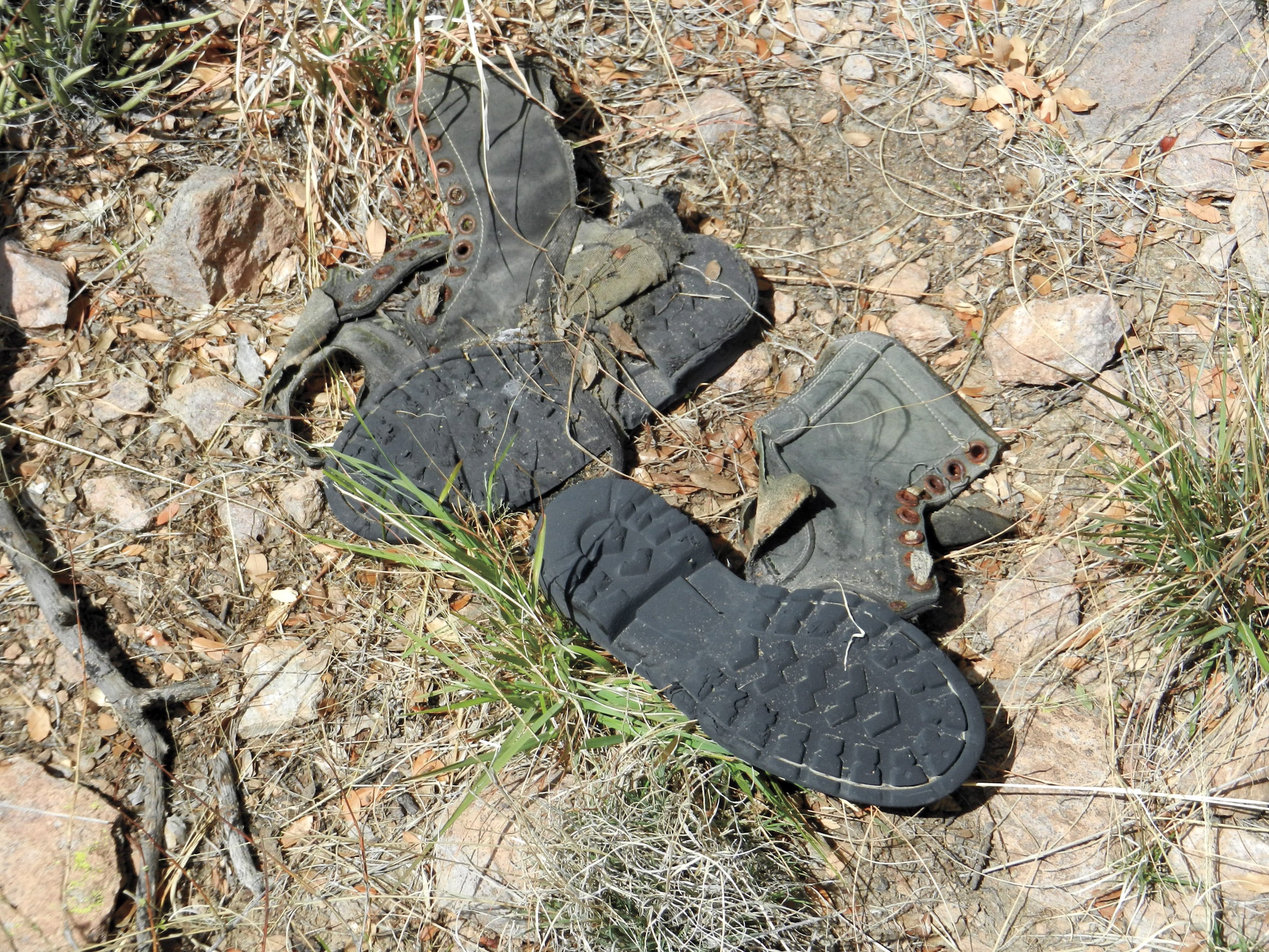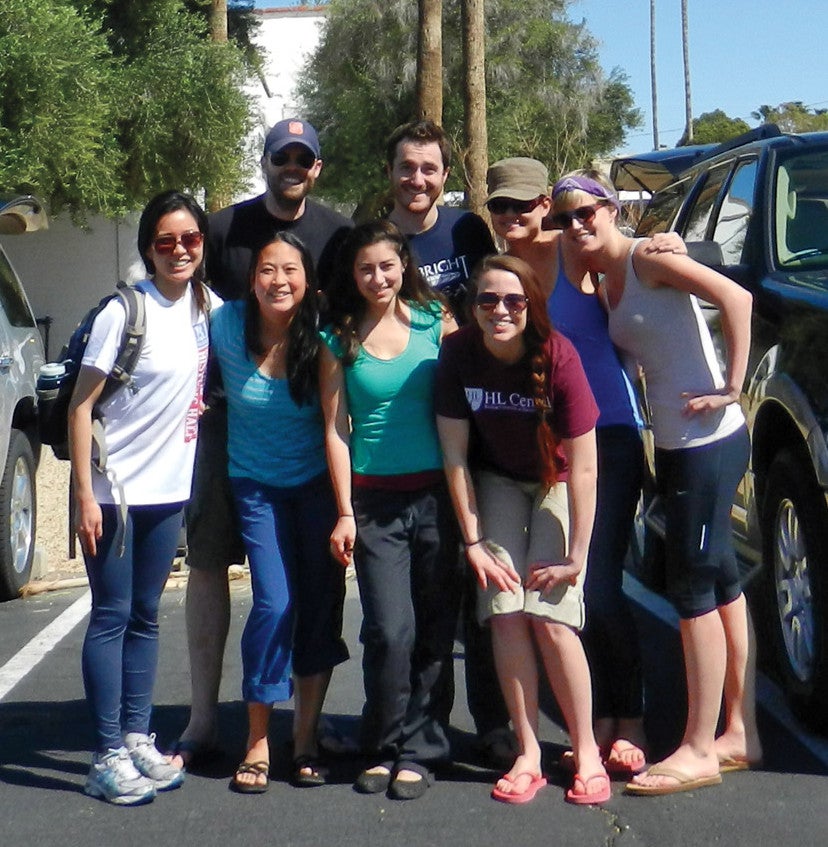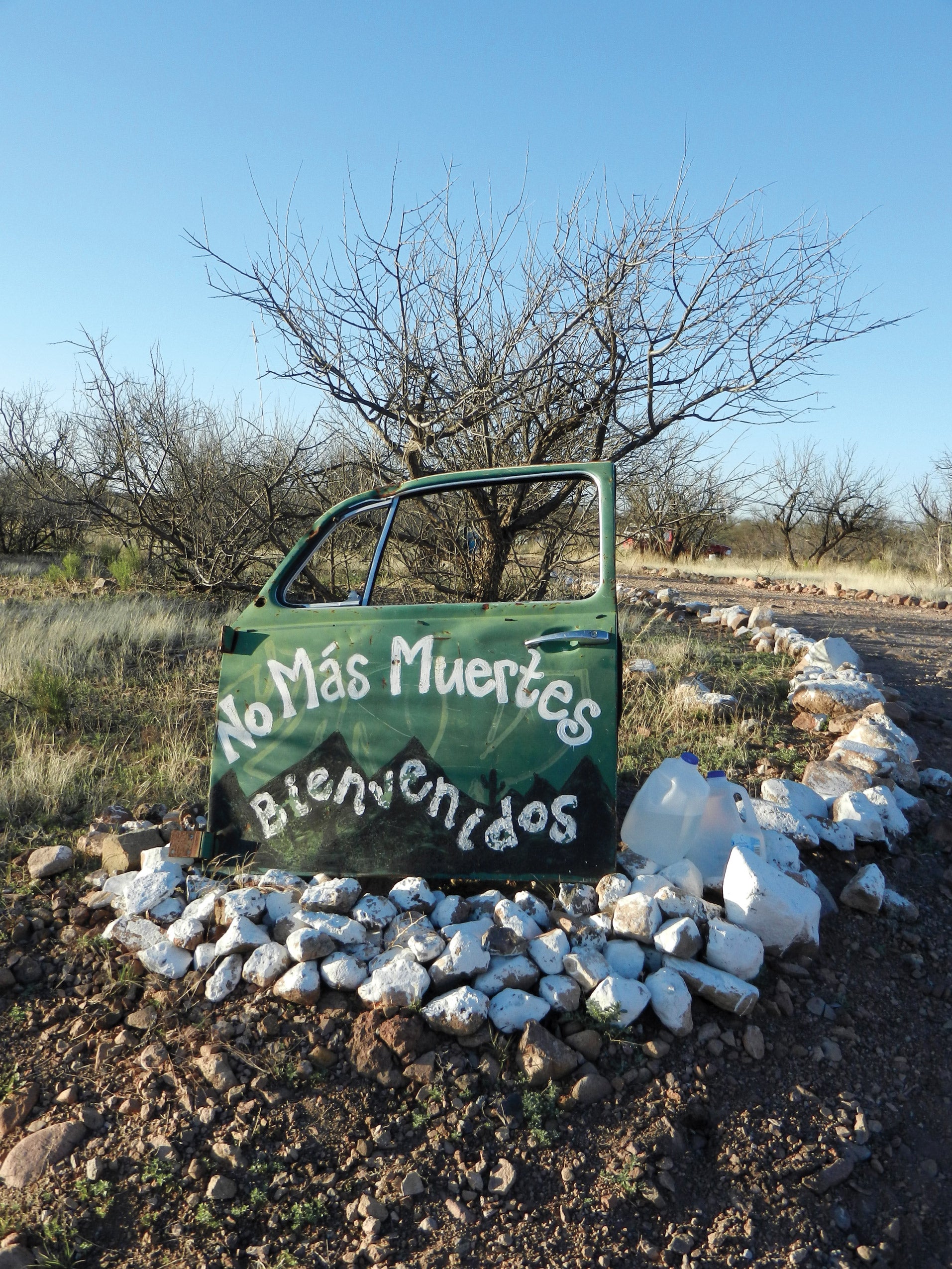For spring break this year, six students from the law school headed south—not to the beaches of Mexico, but to the desert along the Arizona-Mexico border, where they worked with the organization No More Deaths, which provides humanitarian aid to migrants trying to make the crossing into the United States. The trip was led by Emily Leung and Phil Torrey of the Harvard Immigration and Refugee Clinic.

The group set up camp five miles from the border in the Coronado National Forest, an area where many migrants slip through the barbed-wire fence marking the border and attempt the five-day to two-week journey to safer ground, outside the area that is patrolled, up near Tucson. Over the past 14 years, more than 2,600 migrants have died along the border. The area has steep, dangerous terrain that is home to rattlesnakes, tarantulas and scorpions. Another hazard to migrants is Border Patrol. “I expected the desert aspect to be challenging. What I didn’t expect was how militarized the area was going to be,” said Emma Scott ’16. The agents carry assault rifles and rely on drones, radar surveillance, helicopters, and infrared sensors. Those migrants who are caught are put in a “cage” in the back of a pickup truck and brought to detention.

Each day, the volunteers left caches of water jugs, food, socks and blankets at strategic locations. They also walked the terrain themselves, trying to identify migrant routes and gauging how actively traveled they were based on the litter and personal property left behind. One day, they came upon a pot of beans next to the trail, still warm. They speculated that the migrants had heard them coming and fled.
Leung, a fellow at the clinic, and Torrey, a clinical instructor and lecturer on law at HLS, have worked with many clients who have made this journey. “To be there and actually walking the same trails and wondering if the only reason your client made it here is because of a water drop that No More Deaths did, or because they ran into somebody who was able to give medical aid, was a really powerful experience,” Torrey said.

At the end of their week, the group went up to a courthouse in Tucson to observe what happens to the migrants who are caught and then prosecuted through Operation Streamline, a program implemented in three border states starting in 2005. They watched as 70 immigrants filed through in shackles, going up in front of the judge in groups of eight. Each was charged with two federal crimes: illegal entry, a misdemeanor, and illegal re-entry, a felony. In the span of minutes, all eight pleaded guilty to the lesser charge and were sentenced to jail for up to six months. Once they’re released, they will be dropped off at the Mexican border for deportation. Some of them will turn around and attempt the journey again.
“One night as we sat around the campfire, a volunteer shared that on her hike that day she found a Bible that contained a personal poem titled ‘Cansado de Camino’—Tired of the Walk. The exhaustion we felt at the end of each day couldn’t approach that felt by those who walk for days and weeks at a time. Those making the trip must have powerful forces pushing them forward. Their courage is unparalleled.”
Sima Atri ’15 and Emma Scott ’16, “Confronting unjust immigration and border policies in the Arizona desert,” Harvard Law Record, March 27
Watching the proceedings gave Sima Atri ’15 a more personal perspective on the contentious immigration issue in the U.S., which has deported 2 million people since 2008: “A lot of the people [who go through the Tucson court] had been living in the U.S. for dozens of years and were trying to return to their families. A lot of them could be applying for asylum status, but it’s not even possible in this context. Seeing how limited people’s choices are and what they are made to go through to get across humanized this debate for me.”
